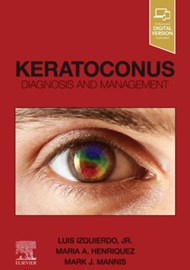From the history of keratoconus to its diagnosis and management, this book covers everything. Don’t be fooled by thinking keratoconus is a simple disease like I did; this book is dense, and packed with information.
The book is divided into seven large sections (and further subdivided into chapters), which covers its pathophysiology, classification systems, associated disorders, imaging, and non-surgical and surgical management. This even includes a short section on case studies and learning points to draw from these!
Each chapter of the book starts with a key concepts summary, which is a list of the most important learning points of that segment. Throughout the text, the authors make sure to define terminology as you go along, like ‘forme fruste keratoconus’, ‘genetic linkage / association / sequencing studies’, and so on.
Overall, the book was a fairly straightforward and interesting read, but definitely felt like lists at times; for example, when discussing the different genes that predispose keratoconus or which specific cytokines are seen in various parts of the eye anatomy during the disease process. This was expected, however; if I had to describe this book, I’d say it was an encyclopaedia for everything keratoconus.
I think the book does a great job at incorporating lots of tables and diagrams, making the large amounts of information much easier to digest. Especially in the section covering the surgical management of keratoconus, there were multiple step-by-step images showing how corneal pockets are created for intracorneal segment insertion.
Before reading this book, I never realised how difficult it was to classify keratoconus – especially in milder disease – and how multifactorial its pathophysiology was. It was also really fascinating to see a brief overview on the development of artificial intelligence and machine learning in the detection of keratoconus and corneal ectasias on current and old forms of optical imaging. As a contact lens wearer myself, I also found the discussion on corneal ectasia post-LASIK very interesting, as I had never thought of keratoconus as a possible clinical sequelae of this procedure.
If you’re interested to learn more about the nitty gritty details of keratoconus and want a reference book for up-to-date information regarding the disease, then I’d recommend this book. Otherwise, I’m not sure it’s the most important to keep on your bookshelf.




